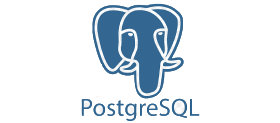Unearthing Insights, Transforming Healthcare: The Power of Data Scraping
Data scraping in the medical field is a pivotal process that transforms the vast ocean of online healthcare data into actionable insights. By extracting relevant information from various medical websites, research papers, and health forums, data scraping enables healthcare professionals and researchers to stay updated with the latest medical advances, treatment options, and patient outcomes. This process not only accelerates medical research by providing a rich dataset for analysis but also enhances patient care through the aggregation of comprehensive medical information and trends. Ultimately, data scraping serves as a critical tool in advancing medical knowledge, improving healthcare delivery, and fostering innovations that can lead to better health outcomes worldwide.


Empowering Healthcare Insights: Data Scraping for Informed Decisions
Data scraping streamlines access to vast amounts of healthcare data from various sources, enabling researchers, analysts, and decision-makers to gather valuable insights efficiently. By aggregating and analyzing this data, healthcare professionals can identify trends, patterns, and correlations that inform research, improve diagnostics, guide treatment decisions, and enhance patient outcomes. Data scraping enhances the speed, accuracy, and depth of information available for analysis, empowering stakeholders to make informed decisions and drive innovations that advance healthcare delivery.
Problem Statement
Develop a web scraping script to extract medical data from various online sources for a medical website. The website aims to provide users with up-to-date information on insurance details, doctor details, medicine details, and more... The scraping script should collect data such as insurance details, doctor details, medicine details, and healthcare provider information from reliable medical websites, forums, and databases. Ensure that the scraped data is accurate, relevant, and up-to-date, and design the script to handle any changes in the website structure gracefully. Additionally, prioritize data integrity and ethical considerations, adhering to all legal requirements and respecting website terms of service during the scraping process.

Data Scraping Challenges
Recaptcha
Website Loading
Login-Protected
Data Cleaning and Preprocessing
Multiple Navigation
Data Scraping Solutions
Recaptcha
Website Loading
Login-Protected
Data Cleaning and Preprocessing
Multiple Navigation
Technologies Used
Unlocking the Digital Treasure Trove: Seamless Extraction of Raw Data
The first step in the data scraping process involves collecting raw data from various sources. This is achieved through the following means:
Web Scraping Tools and Technologies
Handling Complex Website Structures
Overcoming Load Times and Recaptcha
Transforming Chaos into Clarity: Molding Raw Data into Structured Insights
Once the raw data is collected, it undergoes a crucial transformation process to convert it into a structured format suitable for analysis. This involves:
Data Cleaning
Data Preprocessing
Automation of Repetitive Tasks
From Data to Decisions: Crafting Well-Formed Insights for Impactful Outcomes
The final step is to present the structured data in a way that is accessible, understandable, and actionable for end-users. This involves:








